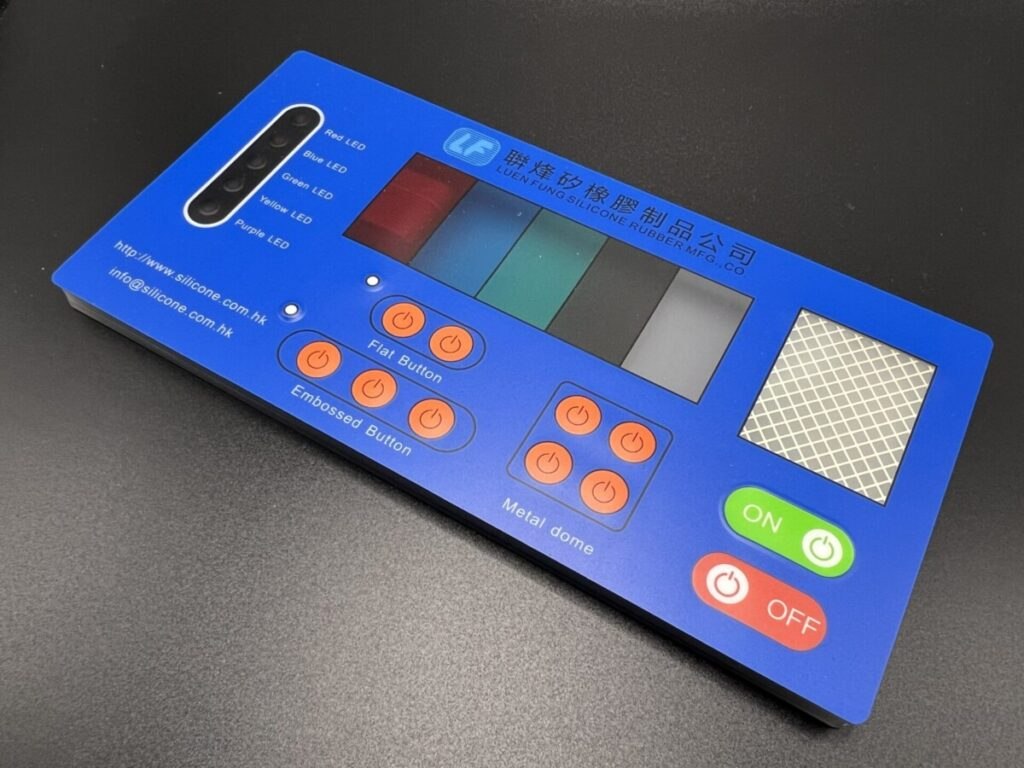Membrane switches are widely used in a variety of industries due to their reliability, sleek design, and cost efficiency. However, one key decision during the design process is choosing between tactile and non-tactile membrane switches.
In this article, we’ll explain the differences between tactile and non-tactile membrane switches, compare their performance characteristics, and help you decide which option is best for your application.
What Is a Tactile Membrane Switch?
How It Works:
- When a user presses a button, the dome collapses with a noticeable “click” feel and sound.
- Upon release, the dome returns to its original shape, breaking the circuit.
Advantages:
- Immediate feedback helps prevent accidental presses
- Satisfying “click” improves user confidence
- Suitable for applications where precise control is required
Common Applications:
- Medical equipment
- Industrial control panels
- Military and aerospace keypads
- High-precision consumer electronics
What Is a Non-Tactile Membrane Switch?
How It Works:
- Two circuit layers are separated by a spacer.
- Pressing the overlay forces the layers to make contact without any snap dome or click.
Advantages:
- Longer lifespan (typically 5–10 million actuations)
- Simpler construction and lower cost
- Allows for extremely thin, low-profile designs
- More reliable in harsh or repeated-use environments
Common Applications:
- High-use kiosk interfaces
- Appliances and remote controls
- Cleanroom and laboratory equipment
- Touchscreens with supplemental buttons
Side-by-Side Comparison
| Feature | Tactile Membrane Switch | Non-Tactile Membrane Switch |
| Feedback | Yes – physical click | No – relies on visual/audio |
| Lifespan | 1–2 million actuations | 5–10 million actuations |
| User Experience | High – satisfying to use | Moderate – needs feedback system |
| Cost | Slightly higher | Lower (simpler design) |
| Complexity | More components (domes) | Simpler layering |
| Flexibilité de conception | Dome placement limits spacing | More freedom in circuit layout |
| Best For | Precision & low-volume use | High-use & long-life equipment |
Hybrid Option: Tactile Switches with Dome Arrays or LED Feedback
Some designs combine tactile and non-tactile features, such as:
- Tactile switches with LED indicators
- Non-tactile switches with audio buzzers
- Dome arrays for uniform tactile response
These hybrid configurations are excellent for user interfaces requiring both feedback and long life.
Key Design Considerations When Choosing
When deciding between tactile and non-tactile switches, ask the following:
When deciding between tactile and non-tactile switches, ask the following:
- How often will the switch be used?
→ Frequent use = Non-tactile preferred for durability. - Is user feedback important?
→ Yes = Tactile or visual/audio feedback needed. - Is cost a major constraint?
→ Non-tactile switches are usually more affordable. - What is the environmental condition?
→ Harsh, outdoor, or cleanroom use may favor non-tactile (sealed). - Do aesthetics or space constraints matter?
→ Non-tactile designs are slimmer and more flexible.
Conclusion: Which One Should You Use?
Both tactile and non-tactile membrane switches have unique strengths. The right choice depends on your product’s use case, environment, user interaction, and expected lifetime.
At [LUEN FUNG silicone Rubber Mfg., Co.], we help OEMs and engineers select the best membrane switch configuration for their specific needs. Whether you need a responsive tactile interface or a rugged non-tactile design for high-volume use, we offer custom solutions to match your application.
👉 Contact us today to learn more about our custom membrane switch manufacturing capabilities or request a free design consultation.
